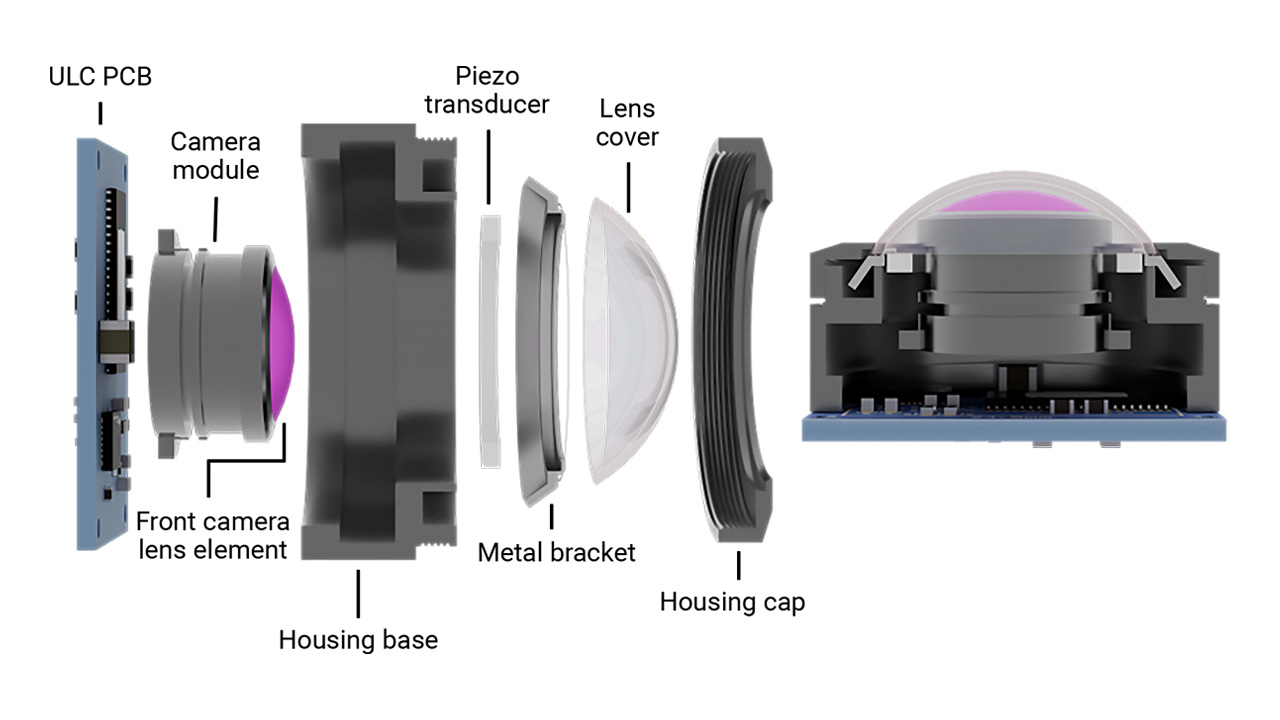Ultrasonic Lens Cleaning (ULC) is a technology that uses high-frequency vibrations to clean the surface of an object. This technology can be applied to clean surfaces made of materials such as glass, silicon and polycarbonate, including camera lenses. Below is a detailed explanation of the principles of Ultrasonic Lens Cleaning technology:
Resonance Principle:
All objects have an intrinsic frequency that depends on the molecular structure and geometry of the object. When an object is excited by energy at this unique frequency, it vibrates or oscillates. This phenomenon is called resonance. For example, a guitar string vibrates when it is plucked at its intrinsic frequency.
Ultrasonic Vibration:
Ultrasonic vibrations are vibrations with frequencies beyond the range of human hearing. By using piezoelectric transducers and advanced semiconductors, ultrasonic vibrations can be precisely applied to the surface of an object.

Cleaning Process:
Ultrasonic vibrations can produce a displacement of about 10 microns, a displacement that is imperceptible to the human eye but is sufficient to dislodge water, dirt and other contaminants from the surface of an object. This is because the ultrasonic vibrations generate enough energy on the surface of the object to break the adhesion of the contaminants to the surface.
System Design:
An ultrasonic lens cleaning system typically consists of a transducer capable of generating ultrasonic vibrations and a corresponding electronic control unit. The system design should take into account how to effectively transfer ultrasonic energy to the lens surface, and ensure that the vibration pattern can cover the entire cleaning area.

Application scenarios:
Ultrasonic lens cleaning technology is particularly suitable for the need to maintain a clean and transparent surface of the occasion, such as automotive rear cameras, traffic surveillance cameras, medical endoscopes and so on. In these applications, lens clarity is critical to image quality and system performance.
Technical Advantage:
Compared to mechanical cleaning methods such as wipers or compressed air, ultrasonic cleaning technology does not require complex mechanics and can be integrated into equipment in a smaller and more efficient manner. In addition, it can remove dirt without damaging sensitive surfaces.
Automatic Sensing and Removal:
Some advanced systems can automatically sense water droplets or dirt and initiate the cleaning process to keep lenses consistently clean.
Semiconductor Integration:
For mini and high performance, ultrasonic cleaning technology can be integrated with specific semiconductor technologies to make the entire cleaning system more compact and reliable.
In summary, ultrasonic lens cleaning technology can effectively remove contaminants from the surface of an object while maintaining the integrity and functionality of the object itself.
*Image courtesy of Texas Instruments






 Focus on us
Focus on us